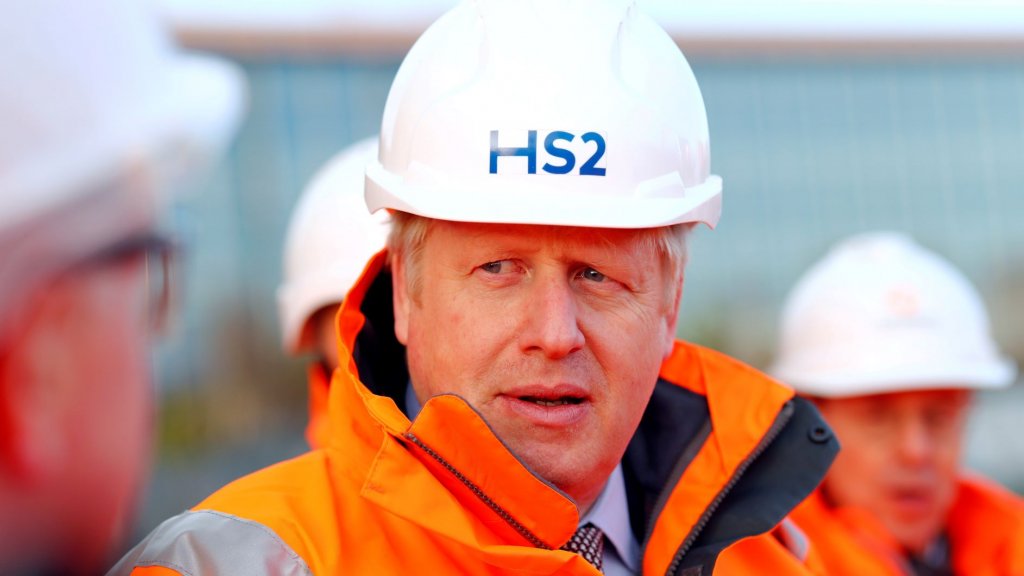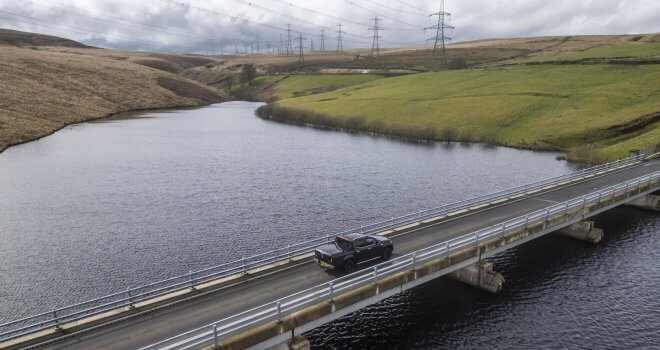ICE Issues Urgent Call For Lessons from HS2’s Struggles To Inform Future Infrastructure Projects

The Institution of Civil Engineers (ICE) has warned that lessons from the challenges faced by the High Speed 2 (HS2) project must be learned and applied to future infrastructure projects across the UK.
As the country embarks on major undertakings in areas such as housing and the energy transition, the ICE emphasizes the importance of avoiding past mistakes.
In a briefing report titled The Cancellation of HS2’s Northern Leg – Learning Lessons, the ICE reflects on the decision by former Prime Minister Rishi Sunak to cancel HS2’s northern extension and issues guidance for future infrastructure planning.
The report, released ahead of the Autumn Budget, draws from interviews with key decision-makers involved in HS2 and aims to ensure smoother delivery of upcoming projects.
One of the report’s key takeaways is the need for clarity in leadership. HS2 faced significant disruptions due to a lack of a coherent leadership structure, with frequent shifts in responsibilities and a high turnover of staff.
This led to a loss of institutional memory, confusion in decision-making, and unnecessary duplication of efforts. The ICE underscores that clear leadership and accountability are essential for any large-scale infrastructure project.
The ICE also highlights the importance of stronger departmental capability, particularly in technical oversight and project ownership.
Following the Brexit referendum in 2017, the departure of key advocates for HS2 left a leadership vacuum that undermined the government’s ability to effectively manage costs and design decisions. This reliance on external consultants, combined with the rapid turnover of ministers, hindered the project’s progress.
On the issue of planning, the ICE stresses that major infrastructure projects must have sufficient development time before construction begins. Spending more time on the conceptual stages, the report argues, allows for greater flexibility and cost-effective design decisions.
It also advocates for the appointment of a Design Champion for each major project, ensuring that design principles are embedded at the highest level.
The report calls for greater integration between infrastructure projects to maximize regional benefits. While some work was done to align HS2 with other infrastructure, the ICE believes more could have been done to optimize the benefits to the regions and minimize disruptions to other developments.
The contracting approach used in HS2 Phase 1 is also criticized. The size and scope of contracts left the government in a weak negotiating position, allowing contractors to inflate costs through compensation claims. The ICE recommends a more balanced contracting approach to ensure cost control and visibility of designs.
Finally, the ICE emphasizes that future projects must be driven by clearly stated outcomes rather than costs. In the case of HS2, shifting narratives—ranging from speed and capacity to economic rebalancing—created confusion and undermined political support.
It argues that infrastructure projects should focus on their wider societal benefits and long-term outcomes to build lasting public and political buy-in.
Reflecting on the broader implications for UK infrastructure, the ICE concludes that decision-makers must prioritize clarity, technical oversight, and outcome-focused planning to avoid repeating the issues that plagued HS2. The merger of the National Infrastructure Commission and the Infrastructure and Projects Authority offers an opportunity to strengthen infrastructure delivery, but only if the lessons from HS2 are heeded.
With major infrastructure projects looming on the horizon, the ICE’s report serves as a critical reminder that careful planning, strong leadership, and a focus on long-term benefits are essential to ensuring success.
The revival of HS2’s northern leg, or even the broader HS2 project, is a complex issue dependent on various political, financial, and public factors. While HS2’s northern extension has been officially canceled, several conditions could potentially lead to its revival:
1. Political Will
The primary driver behind HS2’s revival would be a shift in political will. A new government, or a change in priorities within the existing government, could reignite interest in the project, particularly if political leaders see it as key to regional development or addressing economic disparities. Advocates for the northern leg argue that it’s critical for the “levelling up” agenda, particularly for connecting the North of England to the South and improving economic opportunities outside London.
2. Economic Conditions
If the UK economy improves and the public finances stabilize, there could be room to reallocate funding towards large infrastructure projects like HS2. While the cancellation of the northern leg was partly due to budgetary constraints, a stronger economic outlook might make large-scale infrastructure investments more politically and financially viable.
3. Regional Pressure
There has been significant backlash from northern leaders, business groups, and local councils who see HS2 as vital for the economic future of cities like Manchester and Leeds. If regional governments and the public continue to pressure Westminster, it could lead to reconsideration. The North of England may seek alternative funding mechanisms or partnerships to try to resurrect parts of the project, potentially with private investment.
4. Changes in Infrastructure Priorities
The UK’s long-term infrastructure priorities may shift, particularly as the government focuses on decarbonization and improving national connectivity. If HS2’s environmental benefits (e.g., reducing reliance on cars and planes) become more politically attractive, there could be renewed interest. A push for green infrastructure could bring HS2 back into the conversation, especially if it aligns with net-zero targets.
5. Partial or Phased Revivals
Even if the full northern leg doesn’t return, parts of HS2 could be revived in different forms. For example, smaller regional connections or extensions of existing phases might be proposed as standalone projects. HS2’s high-speed technology and design could be incorporated into other planned rail improvements, meaning the project’s original vision could live on in a different way.
6. Public-Private Partnerships
Given the high costs involved, any revival might need innovative funding solutions, such as public-private partnerships. If private investors or international infrastructure funds see value in the project, particularly in areas like real estate or transportation, they may be willing to contribute to its funding, especially if certain profitable routes are prioritized.
Barriers to Revival:
- Cost Overruns and Fiscal Constraints: The financial burden of HS2 has been a central reason for its cancellation. Reviving the project would require addressing cost control measures and ensuring that public support is maintained.
- Public Perception: While there is strong support for HS2 in some quarters, other parts of the public remain skeptical due to the rising costs and disruptions caused by the project. Gaining widespread public approval for a revival would be crucial.




